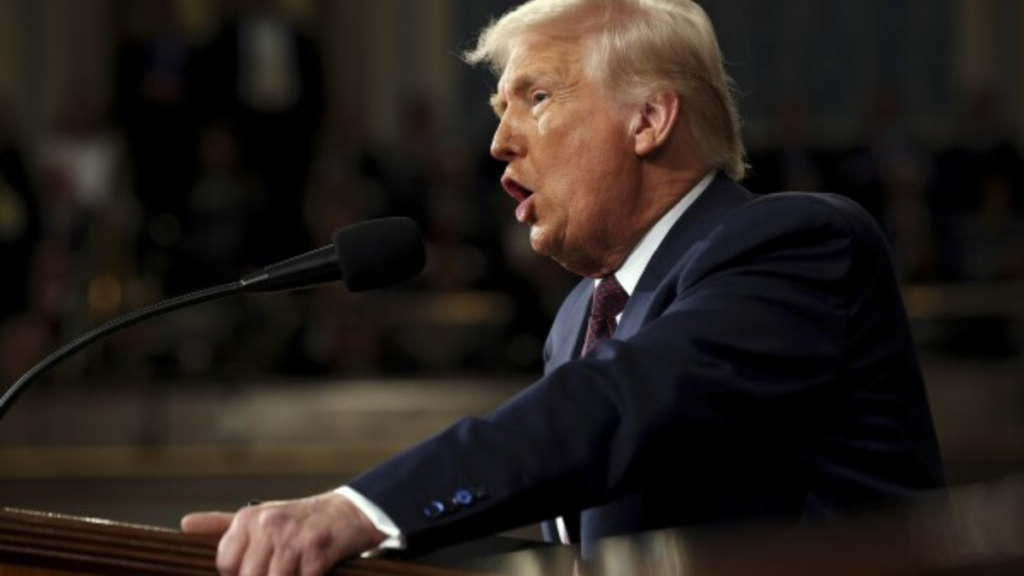A student loan policy from former President Donald Trump’s administration has come under renewed scrutiny after officials admitted that it nearly caused a surge in payments for married borrowers.
The revelation, which comes amid ongoing debates over student debt relief and income-driven repayment (IDR) plans, highlights how even small bureaucratic decisions can significantly affect millions of Americans’ finances.
The issue centers around how the federal government calculates monthly payments for married borrowers who file their taxes jointly under certain repayment plans. For years, IDR programs have used a borrower’s discretionary income to determine monthly loan payments.
But a rule change during the Trump administration’s tenure temporarily shifted that calculation in a way that could have increased costs dramatically for couples.
What Exactly Went Wrong With the Repayment Calculation?
The Trump-era modification involved the formula used to assess combined household income for student loan repayment. Under most IDR plans—such as Pay As You Earn (PAYE) and Revised Pay As You Earn (REPAYE)—borrowers can choose to have their payments based on just their individual income if they file taxes separately.
However, a policy shift briefly required joint filers’ full household income to be considered, regardless of their filing status, for certain plans.
This tweak could have resulted in married borrowers seeing significantly higher monthly payments—sometimes doubling or tripling the amount—because their spouse’s income was counted, even if they filed taxes separately to avoid that impact.
While the adjustment never became permanent policy, internal reviews and public pressure have now pushed officials from the Trump-era education leadership to concede it was a mistake.

Acknowledgment of Error: Trump Officials Speak Out
In a rare admission, former education officials acknowledged that the payment calculation change “should never have been implemented as it was.” According to sources familiar with internal discussions, the decision lacked thorough vetting and public input, both of which are typically standard for Department of Education policy changes that carry widespread implications.
The policy revision was quietly introduced as part of a larger effort to streamline repayment structures, but experts and borrower advocates immediately flagged it as harmful to lower- and middle-income households. Critics argued it disproportionately punished married couples trying to manage debt jointly while still maintaining some financial independence.
Since then, the policy has been walked back under the Biden administration, with Education Secretary Miguel Cardona reaffirming the department’s commitment to “borrower-centered reforms” in all student loan repayment programs.
Broader Impact on Married Student Loan Borrowers
Although the policy never became a long-term regulation, its brief implementation sparked concern among borrowers and financial planners alike. Many couples expressed confusion and fear as their payment notices reflected unexplained increases, leading to budget strain and missed payments.
Here are a few key effects had the change remained in place:
- Higher Monthly Payments: Many borrowers would have faced increases of hundreds of dollars per month.
- Increased Risk of Default: Higher costs could have pushed financially vulnerable borrowers into delinquency or default.
- Strain on Joint Filers: The rule punished couples for choosing to file jointly, often for tax benefit reasons.
Consumer protection groups like the Student Borrower Protection Center argued that the move undermined the purpose of IDR plans—to make repayment affordable and sustainable.
Policy Correction and Path Forward
The Biden administration has since taken significant steps to not only reverse this mistake but also improve IDR plans for all borrowers. This includes launching the SAVE Plan (Saving on a Valuable Education), which further reduces monthly payments and protects more of a borrower’s income.
Additionally, reforms have improved transparency by requiring more public comment and stakeholder engagement before enacting policy changes. The Department of Education has also introduced targeted relief and forgiveness programs for eligible borrowers.
Meanwhile, advocates are pushing for future administrations to apply more rigorous oversight to loan policy changes and ensure that borrower interests remain front and center.
Conclusion: Transparency and Accountability Are Key
This incident serves as a stark reminder of how policy changes—especially in federal student loan programs—can impact millions of Americans. The Trump administration’s acknowledgment of the error marks a rare moment of accountability, but it also underscores the importance of clear communication and fair policy design in higher education finance.
As the student loan system continues to evolve, borrowers, advocates, and lawmakers alike must work together to ensure no one is unfairly penalized for their filing status, marital situation, or lack of political power.
To learn more about how repayment plans may affect your student loans, visit the official Federal Student Aid website.
Disclaimer – Our team has carefully fact-checked this article to make sure it’s accurate and free from any misinformation. We’re dedicated to keeping our content honest and reliable for our readers.








